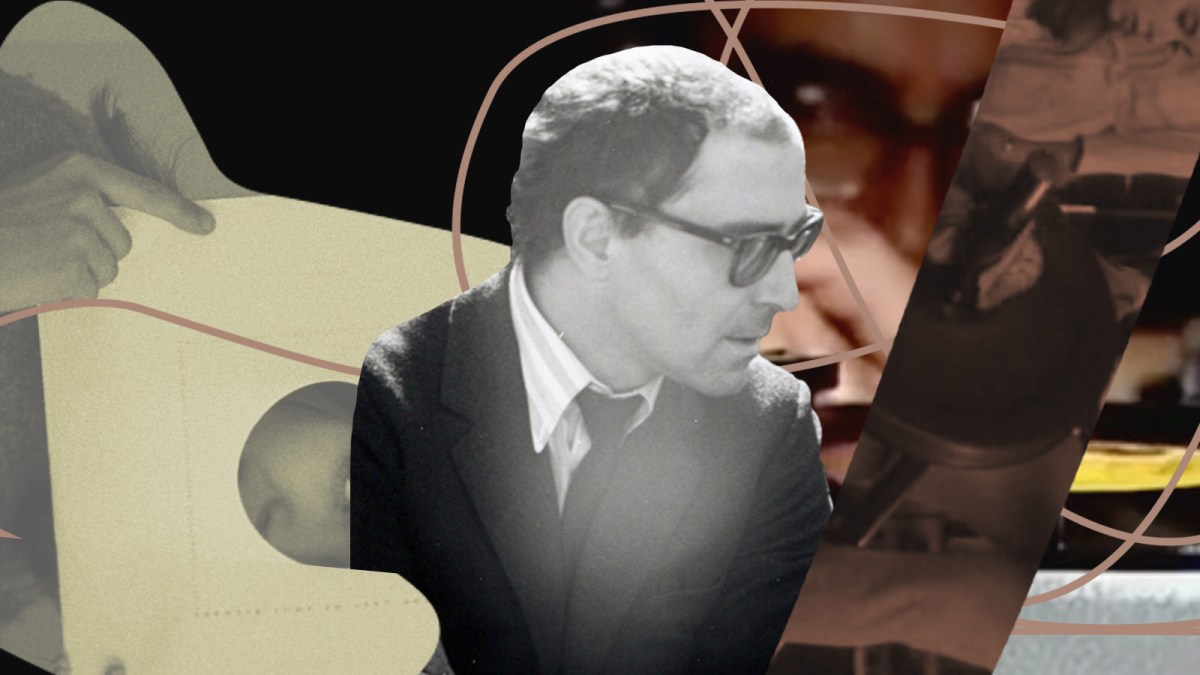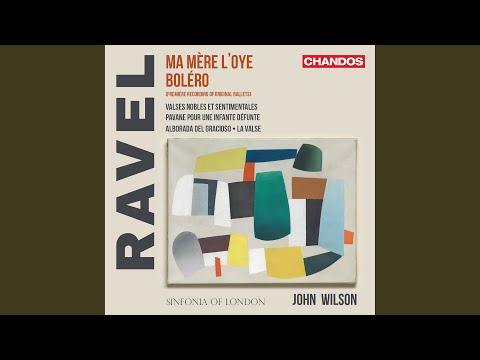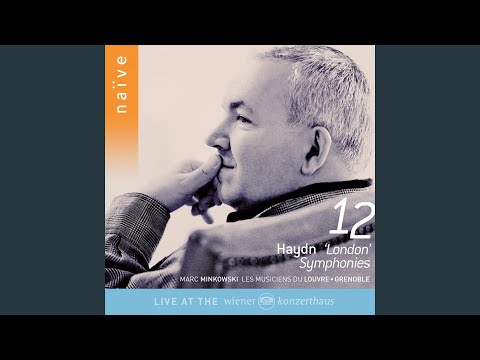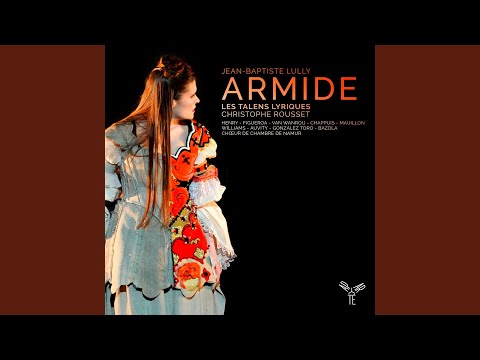- John Wilson, Sinfonia of London: “Ravel: Orchestral Works” (Chandos)
- Les Musiciens du Louvre-Grenoble, Marc Minkowski: “Haydn: ‘London’ Symphonies” (Naïve)
- Les Talens Lyriques, Christophe Rousset, et. al.: “Lully: ‘Armide’” (Aparté)
In 1980, the city of Lausanne, Switzerland commissioned Jean-Luc Godard to create a short film in celebration of its quincentenary, one of two that they would use to promote tourism and culture. Godard—being Godard—demurred at the idea of directing a commercial but offered instead a “poetic study” of the city where he had once lived.
By the end of 1981, the Lausanner government was ready to disown the New Wave auteur. His resulting film, the 11-minute “Lettre à Freddy Buache,” was dedicated and dictated to the eponymous film critic, quoted Wittgenstein, and featured footage of the director and his crew being stopped by the local police for filming along the roadside. “They gave money for a film on, and this is a film about,” Godard says in his voiceover. “It hasn’t yet reached the surface; it’s still at the bottom of things.” His Lausanne unfolds in footage of unexciting municipal buildings, verdant tree branches, and frames of ordinary people walking through crowded streets that are at times so slow-motion they’re rendered into standstills.
Godard fixates on the people, saying to Buache that he’s trying “to find in these crowd movements the beginnings of fiction.” While fiction, to Godard, is essential to the lifeblood of a city, it wasn’t to the elected officials who oversaw the film’s development. “What is certain is that [this work] will make no impact on the general public, and will make even less of one on the people we would like to bring to Lausanne,” they declared.
In this way, the outcry against “Lettre à Freddy Buache” mirrors the disdain that originally met Godard’s soundtrack of choice for the film: Ravel’s “Boléro.” Ever his own critic, Ravel described the work as “an experiment in a very special and limited direction… There are no contrasts, and there is practically no invention except in the plan and the manner of the execution.” Across 17 repetitions, the same melody is played against a rhythm initially set by a snare drum and a complementary pizzicato plucking of quarter and eighth notes. Among these crowd movements, however, Ravel finds the beginnings of a fiction—one picked up by the work’s commissioning choreographer, Ida Rubinstein.
The latest from VAN, delivered straight to your inbox
I rewatched “Lettre à Freddy Buache” several times this week following Tuesday’s news of Godard’s death by assisted suicide at the age of 91. It’s not the first—or even the sixth—film that many would rush to in pointing out the director’s idiosyncratic relationship to music. But it exemplifies Michael Baumgartner’s description of Godard as listener:
He embodies the quintessential, keen music consumer who came of age in the early era of the long-playing 33-rpm record and who does not play an instrument himself but reveals an ardent admiration for all types of music.
Baumgartner goes on to link Godard’s listening aesthetic to Walter Benjamin’s philosophy that “even the most perfect reproduction of a work of art is lacking in one element: its presence in time and space, its unique existence at the place where it happens to be.” In “Lettre à Freddy Buache,” Godard opens by setting up his sound equipment, dusting a record needle, and crouching down to eye-level with the disc to find the precise spot where he wants it to drop. We’re thrust into the latter half of “Boléro,” one of the final repetitions in which the orchestra has gained crowd momentum. Godard loops this one round over and over for nearly the entirety of the full 11 minutes, creating his own unique moment of existence. Say what you will about “10” or Torvill and Dean, it’s hard to not see Lausanne in a repeat listen of this work; it’s hard not to hear the whole in one of its parts.
In a recording released on Chandos earlier this year, conductor John Wilson and the Sinfonia of London find similar subsurface depth in a work that many of us in classical music love to hate. Closing out nearly 90 minutes of the composer’s orchestral works, the programming of “Boléro” feels like an after-dinner mint scooped from the dish next to the diner’s cash register: absolutely unnecessary, but sure, I’ll take it. Wilson doesn’t treat it as such. His restoration has an eye for detail more associated with the Old Dutch Masters than the modernist influences of Ravel’s era.
A critical move is choreographing the snare drums, as Ravel specified for the original ballet version of his score. With each repetition, the rat-a-tat rhythm onto which all other variations are built switches sides from left to right. Its presence tilts your ears towards one side, its absence on the other leaves a palpable sense of space. Wilson leaves no room for fixed points or straight lines, looking instead for curves and forms—similar, non-narrative shapes that dominated Godard’s cinematic world. That gives room for the Sinfonia’s musicians to abandon rote and routine, the advertorial elements of a well-trod classic, to find something with greater meaning, color, and light. It would be nice for Chandos to include the full Sinfonia roster in the album booklet specifically to know the name of the bassoonist whose inflection at times made the instrument indistinguishable from a sax; or the tenor saxophonist whose line reads became so pixelated that they threatened to break the entire color spectrum; or the piccolo players, hornist, and celesta player who served a textbook example of the ear-scrambling proto-synth techniques Ravel used in pitch adjustment that Melissa Dunphy described in last year’s defense of “Boléro”—all moments that make this piece a stark wonder.
Earlier on in his body of work, Godard reveled in cinematic moments that didn’t rely on music to help tell the story. His second feature film, 1963’s “Le petit soldat,” runs largely as a stage play, punctuated by occasional piano and percussion lines that feel more like scene changes than film score. But the film teems with art. In one scene, as Michel Subor photographs Anna Karina (later Godard’s first wife), the two gaze at a painting by Ravel contemporary Paul Klee. Subor’s character then asks Karina’s if she has any records. She initially offers up Bach (“Too late,” Subor replies. “Bach’s for 8:00 in the morning.”). “Mozart? Beethoven?” she suggests in response. (“Too early. Mozart’s for 8:00 at night.…Beethoven’s for midnight.”)
The afternoon, it turns out, is for “good old Joseph Haydn.” More specifically, a moment from the first movement of his “Surprise” Symphony No. 94. This moment follows a stilted and halting conversation between Subor and Karina, acted and filmed with closely-confined movements in a small section of Karina’s spartan apartment. She’s stoic and sphinx-like, answering more than one of his questions with “None of your business.” Smitten, he continues to talk in hopes of finding the key to her lock. It’s two conversations happening on separate planes.
As the needle drops about two minutes into the first movement of Haydn, however, Karina explodes into her full bloom of personality, dancing from living room to kitchen cabinets, using Subor’s head as an ersatz maypole, flopping on the bed, and diving from the sofa. Less than 50 seconds later, she lifts the needle back up and plops into a chair, staring at the ceiling. She’s left the door ajar just enough for him to work his way through.
Why Haydn? To answer this, I turned to Manfred Angerer’s liner notes for Marc Minkowski’s 2010 recording of the composer’s complete “London” Symphonies with Les Musiciens du Louvre: “It is clearly not Haydn’s aim to express or depict a specific, definable emotion, an easily identifiable feeling or anything of the sort in a single movement, still less in an entire symphony.” The quick transitions and hackneyed angles of Godard (especially early on in his Nouvelle Vague era of cinematography) fit the brief, but expansive, range of Haydn’s “Surprise” Symphony. Clocking in at less than 24 minutes, no one movement surpasses the shelf-life of a smoke break. The longest movement, also the first, flirts between joy and hell, never landing on a final decision.
In a live performance, recorded at Vienna’s Konzerthaus, the surprise element cuts in well into the second movement—including an unexpected barbaric yawp from the orchestra (followed by the blindsided audience recovering before the music continues). Like “Boléro,” it’s easy to associate this movement with the banal “Papa Haydn” keyboard exercises of sixth grade music classes. But here, in a period-instrument ensemble, the Louvre musicians explore the individual personalities of each repetition and of each instrument, leaving nothing to routine. Yet Minkowski’s conducting still maintains some ambiguity and emotional distance; like Haydn, he refuses to pick sides.
Much in the distinction between expectation and reality in Lausanne’s commissioning Godard to effectively create a tourism film, the director’s main source of meaning comes from these perpendiculars. The black-and-white world of Geneva during France’s war with Algeria (and still in the shadow of World War II) is antithetical to the Georgian-era London of Haydn’s time. Similarly, Godard’s take on Lully’s 1686 opera “Armide” (part of the 1987 pastiche-film “Aria”) juxtaposes French Baroque with ’80s bodybuilder culture.
The tables are turned in relation to “Le petit soldat.” Here, two cleaning women (Marion Peterson and Valérie Allain) vie unsuccessfully for the attentions of a handful of overly-jacked, Gold’s Gym-shirted weightlifters—a parallel to Armide’s unrequited love for First Crusade soldier Renaud, fulfilled only through sorcerous duplicity. They stare at the men like besotted water sprites, unable to speak the same language and incapable of being noticed—even when they abandon all of their clothes. (If you also grew up watching Allain run around Paris without a bra in the PBS series “French in Action,” you’ll be glad to know she follows suit here.) At one point, the two women lip-synch the selections of Lully’s opera, blurring the line between the two worlds. Ultimately, they—like Armide herself—are condemned to their desires without deliverance.
Working with the only available recording of the opera at the time (pressed in 1983 and featuring Rachel Yakar in the title role), Godard offsets the creaminess of Yakar’s voice and effete prettiness of the Ensemble Vocal et Instrumental de la Chapelle Royale with the sweat and steel of the gym. Merging the two worlds in one complete recording is Christophe Rousset and Les Talens Lyriques’s version from 2017. As Armide, Lully’s complex antiheroine, Swiss soprano Marie-Adeline Henry sinks her teeth into the role, visceral and voracious. She’s no woodland nymph, but rather a gleaming supernova. Like Minkowski’s read of Haydn, Rousset’s conducting benefits from the vantage point of history, injecting a full range of emotions and ambiguity into the score that results in a searing drama. Everything is brought to the surface. ¶
Subscribers keep VAN running!
VAN is proud to be an independent classical music magazine thanks to our subscribers. For just over 10 cents a day, you can enjoy unlimited access to over 875 articles in our archives—and get new ones delivered straight to your inbox each week.
Not ready to commit to a full year?
You can test-drive VAN for one month for the price of a coffee.




